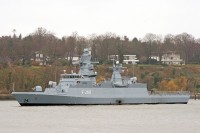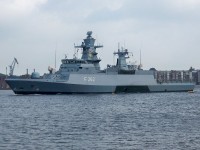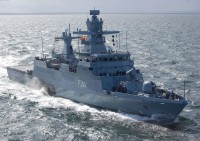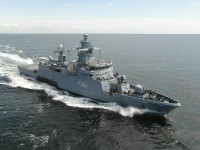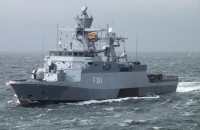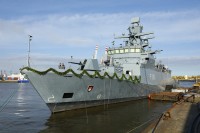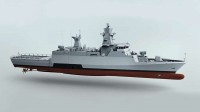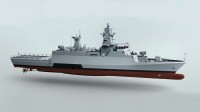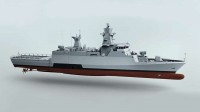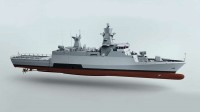Корвети класу «Брауншвейг»
Основна інформація
Головні розміри
Машина
- 2 * MTU 20V 1163 TB 93 diesel engines producing 14.8MW
- 2 * controllable-pitch propellers
Персонал
Бойові сили та засоби
- Cassidian TRS-3D multifunction Passive electronically scanned array C-Band radar
- 2 * navigation radars
- MSSR 2000 i IFF system
- MIRADOR electro-optical sensors
- UL 5000 K ESM suite
- Link 11 and Link 16 communications
- 2 * TKWA/MASS (Multi Ammunition Softkill System) decoy launcher
- 1 * OTO Melara 76 mm gun
- 2 * Mauser BK-27 autocannons
- 4 * RBS-15 Mk.3 anti-ship missiles
- 2 * 21-cell RAM CIWS missile launchers
- 2 * mine racks of 34 * naval mines Mk 12
- 2 * Camcopter S-100 helicopters
- Helicopter pad
- Hangar for two Camcopter S-100
The K130 Braunschweig class (sometimes Korvette 130) is Germany's newest class of ocean-going corvettes. Five ships have replaced the Gepard-class fast attack craft of the German Navy.
In October 2016 it was announced that a second batch of five more corvettes is to be procured from 2022-2025. The decision was in response to NATO requirements expecting Germany to provide a total of four corvettes at the highest readiness level for littoral operations by 2018, and with only five corvettes just two can be provided.
They feature reduced radar and infra-red signature («stealth» beyond the Sachsen-class frigates) and will be equipped with two helicopter UAVs for remote sensing. Recently, the German Navy ordered a first batch of 2 UMS Skeldar V-200 UAVs for the use on the Braunschweig-class corvettes. The hangar is too small for standard helicopters, but the pad is large enough for Sea Kings, Lynx or NH-90s, the helicopters of the German Navy.
Originally the K130 class was supposed to be armed with the naval version of the Polyphem missile, an optical fiber-guided missile with a range of 60 kilometres (37 mi), which at the time was under development. The Polyphem program was canceled in 2003 and instead the designers chose to equip the class with the RBS-15. While the RBS-15 has a much greater range (250 kilometres (160 mi)), the current version mounted on the ships, Mk3, lacks the ECM-resistant video feedback of the Polyphem. The German Navy has ordered the RBS-15 Mk4 in advance, which will be a future development of the Mk3 with increased range (400 kilometres (250 mi)) and a dual seeker for increased resistance to electronic countermeasures. The RBS-15 Mk3 has the capability to engage land targets.
Vessels of this class do not have an executive officer (German: Erster Offizier). Traditionally, in the Germany Navy this was used as a rule to classify a vessel as a boat, not a ship. In a press release the German Navy states that these corvettes will be called ships nonetheless because of their size, armament and endurance. The commanding officer wields the same disciplinary power as a German Army company commander, not that of a battalion commander as is the case with the larger German warships such as frigates. However, in size, armament, protection and role these corvettes resemble modern anti-surface warfare (ASuW) frigates, the main difference being the total absence of any anti-submarine warfare (ASW) related sensors or weapons.
Кораблі10
- Коментарі
 uk
uk en
en ru
ru
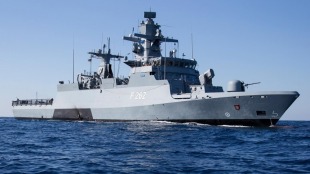
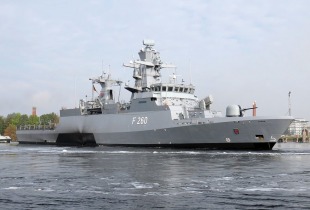
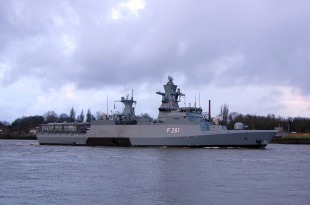
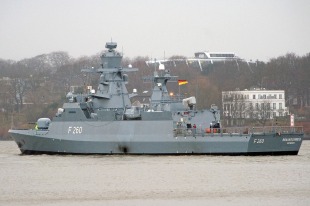
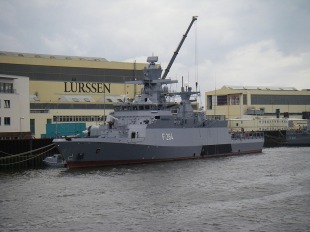
 Військово-морські сили Німеччини
Військово-морські сили Німеччини